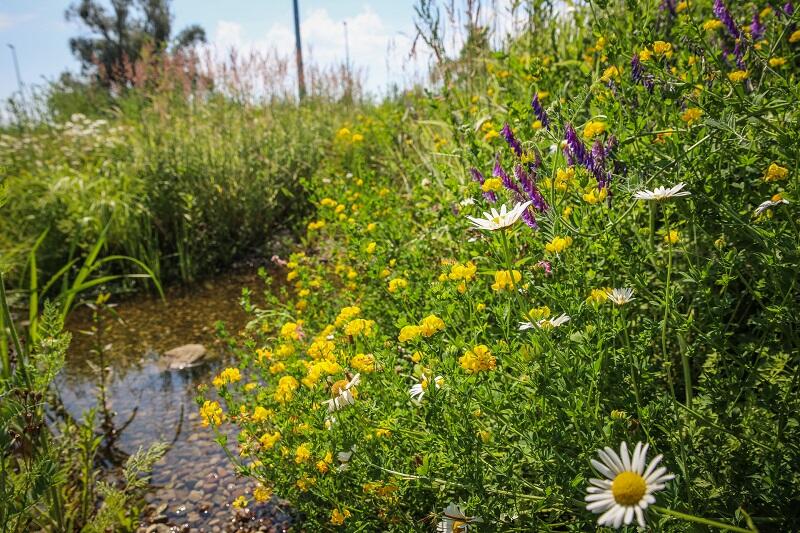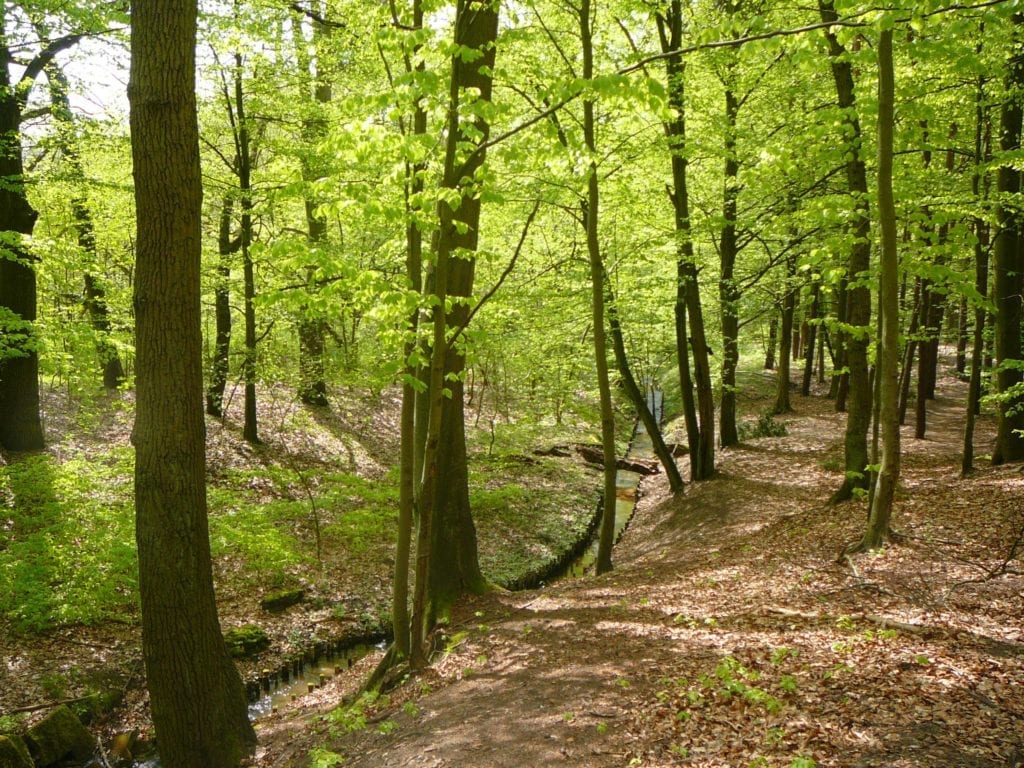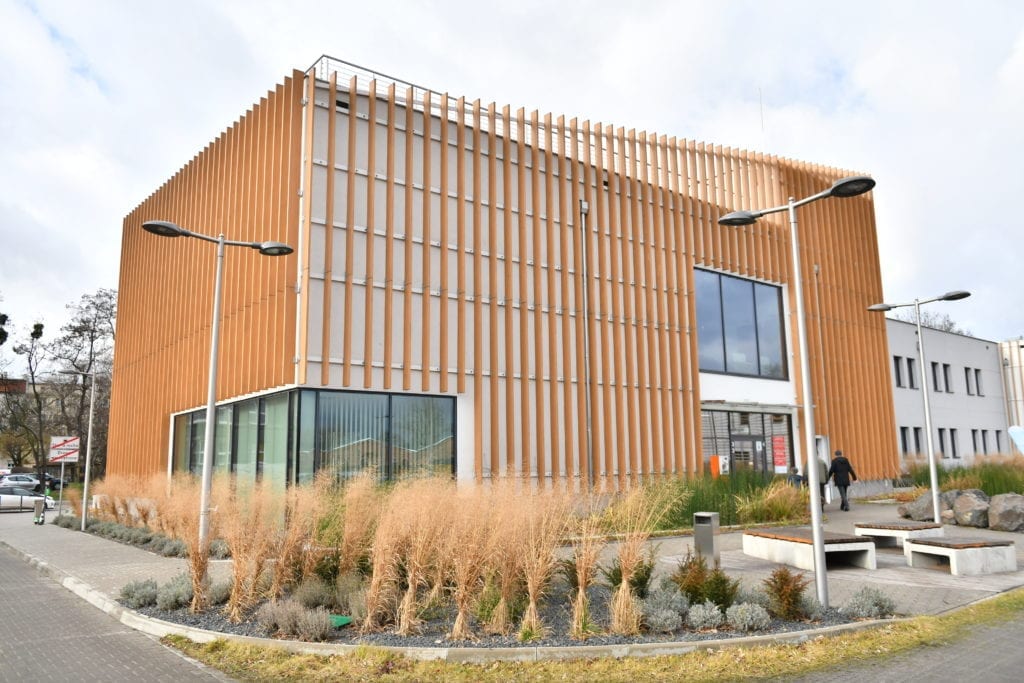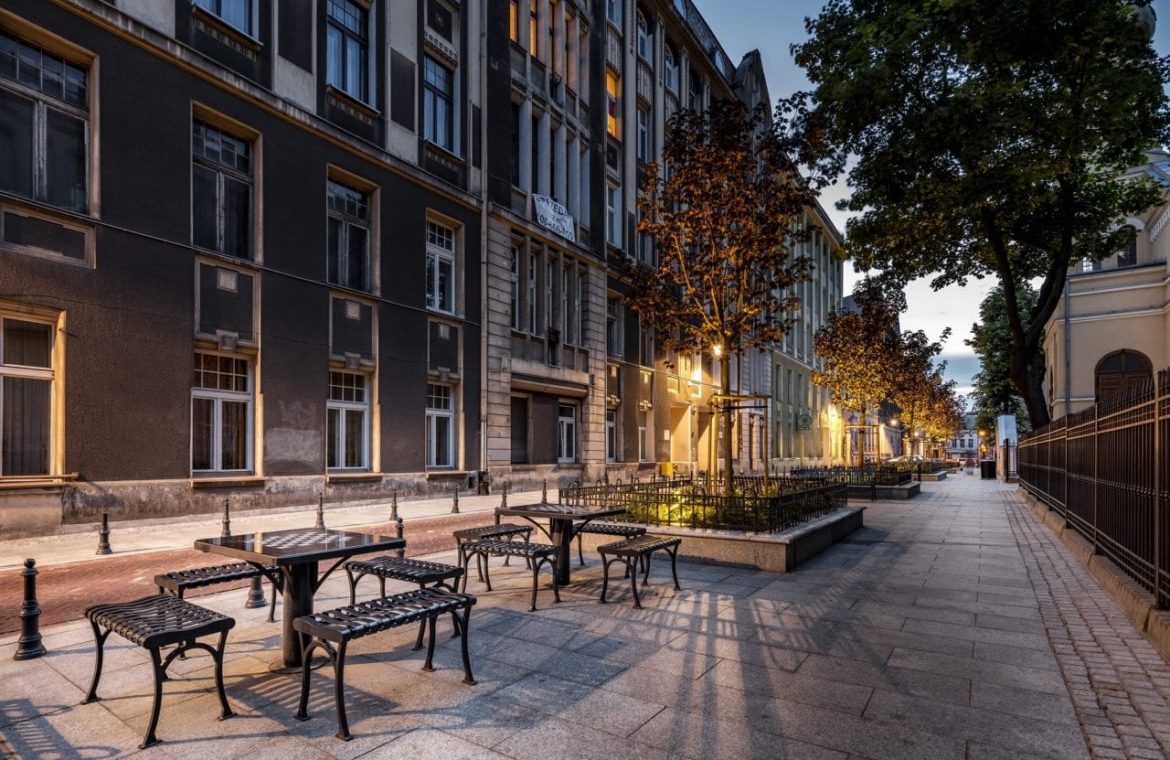Well-kept parks, green spaces, or bike paths may not be enough to stop climate change. Cities must change the way we perceive the environment, so we must include urban space in nature’s order. More and more Polish cities can be proud of the green activities. Let’s look at the most interesting ideas.
ódź woonerfs
Woonerf, so called City Square. It is a kind of street where car traffic is permitted, but pedestrians and cyclists have priority. For many years, Lodz has been using this type of solution with passion, and more and more streets are being turned into streets. The road system is marked on it in such a way that it forces the driver to be as careful as possible and drive quietly, without disturbing pedestrian traffic.
An important component of woonerfs is the introduction of the green and small infrastructure, which forms a kind of stroll from the street. Thanks to these solutions, new green corridors are being created in the urban development of the city. New solutions in urban infrastructure encourage walking or cycling. This open street encourages people to plant green spaces and appreciate their surroundings. In addition, a well-kept street stimulates local shops, buildings and cafes to open up to the outside, creating one common unit.
In ód there are woonerfs on the following streets: August 6, Traugutta, Piramowicza, Knychalskiego, Lipowa, Zacisze and many more.

Rain Gardens in Gdansk
A simple solution that resembles an ordinary garden. In such a space we will find plant species that have the properties of purifying and storing water. Properly prepared land allows a rain garden to retain rainwater from the environment, including paved roofs, roofs, sidewalks, etc. In Gdansk, the first rain park was established in August 2018.
Thanks to the appropriate structure and suitable vegetation, this garden absorbs rainwater up to 40 percent. More effective than classic grass. Rain gardens are a small holding tank with a kind of miniature treatment plant. On the other hand, rainwater, which does not evaporate or infiltrate into the soil, is discharged into the rainwater drainage system as “excess sedimentation”. A properly constructed garden can filter rainwater and act as a retention facility. It should be noted that rain gardens are the blue and green infrastructure of the city – a purely technical component, as they influence the urban natural system.
In Gdansk, the rain gardens are located at ul. Kachichi, Mai. Zakopiańska, ul. Stryjewski, on Bpa Square. O’Rourke.

Good energy from Rzeszów
Many cities are taking measures to reduce energy costs by introducing and using renewable energy sources. Rzeszów can be proud of interesting solutions in this area. The first steps have been taken with the installation of solar panels used to heat the water in swimming pools, as well as in public buildings, where there is a high and continuous demand for hot water. Among other energy projects, the development of 53 public buildings roofs with PV installations. These activities were supposed to lower electricity costs. The panels were launched in 2019 and the project has been rated positively so far.
Photovoltaic panels and heat pumps are used in the Rzeszów suburban bus station project. Thanks to renewable energy sources, the energy independence effect of the entire facility was achieved. In Rzeszów, heated bus stop shelters in winter and air-conditioned in summer are of great importance. These are photovoltaic stopping stations placed on the roof. Another example of good energy production is Miejskie Przedsiębiorstwo Wodociągów i Kanalizacji in Rzeszów. A few years ago, in a wastewater treatment plant, a PV facility consisting of 3,220 slabs with a total capacity of 1 MW was constructed.
(Bio) Szczecin variety
Awareness of biodiversity is a key component of good environmental policy. In Szczecin, a center for the protection of biological diversity has been established in the Arkoński Forest Park. New alleys (about 3 km) with a natural permeable surface made of rubble were created in the forest. A 1.3 km nature and educational road “Serene Stawi” and 5 thematic tracks have been created with a total length of 1.6 km. Huts and terraces were built. Nature Education Square is built in the woods and is equipped with educational field toys and equipment for playing in the woods.
There are also nature stations where you can spot the animals. Of course, measures have been taken to protect and enrich the biological diversity of natural habitats. Forests planted 720 shrubs and 230 trees of native species. 26 bird boxes and 5 insect houses were installed. In addition, 15 cubic meters of hardwood were laid to enrich animal insects. In Arkoński Forest Park, as part of the project, habitats and species with special natural values are marked in order to protect them and build environmental awareness of visitors.

Wroclaw is raining
“Catch the rain” It is a resident program proposed by the Wroclaw City Water and Energy Bureau. In 2019, it is promoted to create household or veranda facilities to collect rainwater and use it in the place of rainfall (rain gardens, above and underground tanks, absorbent wells, etc.). Interested people can receive compensation of 80%, but not more than 5,000 PLN. The program was funded by the budget of Wrocaw in the amount of PLN 250,000.
Another interesting project is Green Cards. The Wrocław Department for Sustainable Development is responsible for coordinating activities within the scope of expanding and protecting green spaces in the city. According to the assumptions, green spaces and nature should be a complete and integral component of the city’s structure. Thanks to green card buildings, each property will have green spaces that are suitably adapted to their conditions and needs. Residents and residential real estate councils will also be involved in greening urban spaces. Thanks to this, the assumptions made by residents will influence the values of real estate areas, while at the same time creating an attractive shared space.

Green roofs in Bydgoszcz
Bydgoszcz, on the other hand, is implementing the GRAD project, which contributes to increasing green infrastructure in both public and private buildings. The main objective of the project is to promote green roofs and living walls as a tool for adapting to urban climate change.
Green roofs can be found on the buildings of Bydgoska Przystań, the Renewable Energy Resource Display Center or – this is already an old project – in the building of the A. Jurasz University Hospital in Bydgoszcz (Rehabilitation Clinic), in the Focus Mall building. Cities like Bielsko-Biaa, Bydgoszcz, Gdynia, Kalisz, Krakow, Lublin, Warsaw and Wroclaw participated in the GRAD project.
Every city must find a way to promote and implement green solutions. Programs should be long-term and should be used by as many public buildings as possible. Remember, the idea is important, but only the concrete actions you can see and feel really matter.
* The material comes from city portals and the Polish Town Union handbook – EKOstrategia. A basket of good environmental practices.
Feature image: Skanska







